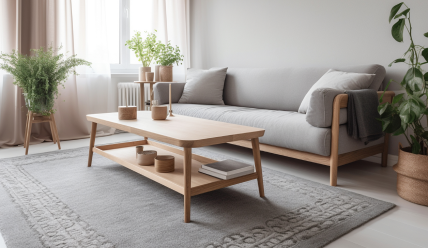Introduction:
Handmade rugs are more than just floor coverings; they are works of art, crafted with skill and care by artisans around the world. Whether you own a luxurious Persian carpet, a vibrant Moroccan rug, or a cozy hand-knotted wool rug, proper care and cleaning are essential to preserve their beauty and extend their lifespan. In this comprehensive guide, we'll delve into the intricacies of caring for handmade rugs, covering everything from routine maintenance to tackling tough stains and preserving their intricate designs.
Understanding Your Handmade Rug:
Before diving into care and cleaning techniques, it's essential to understand the characteristics of your handmade rug. Handmade rugs come in various materials, including wool, silk, cotton, and natural fibers like jute and sisal. Each material requires different care methods, so identifying the composition of your rug is the first step toward effective maintenance.
a. Wool Rugs: Wool rugs are durable, resilient, and naturally stain-resistant. They are well-suited to high-traffic areas but require regular maintenance to prevent dirt and debris from becoming embedded in the fibers.
b. Cotton Rugs: Cotton rugs are lightweight, easy to clean, and perfect for casual spaces like kitchens and bathrooms. They can typically be machine-washed for convenience.
c. Natural Fiber Rugs: Rugs made from natural fibers like jute, sisal, and seagrass add a touch of organic warmth to any room. While they are durable, they are best suited for bright open-air rooms, such as a living or dining room, as opposed to a dimly lit basement, to ensure airflow and resist any moisture build-up in their natural fibers.
Routine Maintenance:
Regular maintenance is crucial for preserving the beauty and longevity of handmade rugs. Here are some essential maintenance tasks to incorporate into your routine:
a. Vacuuming: Regular vacuuming helps remove surface dirt, dust, and debris before they become embedded in the rug fibers. Use a vacuum cleaner with a brushless suction head or set the brush to a high position to avoid damaging delicate fibers.
b. Rotating: To ensure even wear and fading, rotate your rug periodically, especially if it's placed in a high-traffic area or receives direct sunlight.
c. Padding: Use a rug pad underneath your handmade rug to provide extra cushioning, prevent slipping, and protect your floors from scratches and abrasions.
Spot Cleaning:
Accidents happen, and when they do, prompt spot cleaning can prevent stains from setting onto your rug. Here's how to tackle common stains:
a. Blotting: Immediately blot spills with a clean, dry cloth or paper towel to absorb as much liquid as possible. Avoid rubbing, as this can push the stain deeper into the fibers.
b. Gentle Cleansers: For water-soluble stains like food and beverages, mix a mild detergent with water and gently blot the stain with a clean cloth. Rinse with water and blot dry.
c. Vinegar Solution: For stubborn stains and odors, mix equal parts white vinegar and water and apply it to the stain. Blot with a clean cloth and rinse thoroughly with water.
Deep Cleaning:
In addition to routine maintenance and spot cleaning, handmade rugs benefit from periodic deep cleaning to remove embedded dirt, dust, and allergens. Depending on the size and material of your rug, you can choose between professional cleaning services or DIY methods:
a. Professional Cleaning: For valuable or delicate rugs, professional cleaning is recommended to ensure thorough cleaning without damaging the fibers or colors. Look for reputable rug cleaning companies with experience in handling handmade rugs.
b. DIY Cleaning: If you prefer to clean your rug at home, you can use a mild detergent or rug shampoo and a soft brush to gently scrub the surface. Rinse thoroughly with water and allow the rug to air dry completely before placing it back in the room.
Storage and Preservation:
If you need to store your handmade rug temporarily or for an extended period, proper storage techniques are essential to prevent damage and deterioration:
a. Clean and Dry: Ensure the rug is thoroughly cleaned and completely dry before storing it to prevent mold and mildew growth.
b. Roll, Don't Fold: Roll the rug loosely with the pile facing inward to avoid creases and wrinkles. Avoid folding or compressing the rug, as this can damage the fibers and distort the shape.
c. Climate-Controlled Environment: Store the rug in a climate-controlled environment away from direct sunlight, moisture, and pests. Avoid storing it in basements or attics, where temperature and humidity fluctuations are common.
Conclusion:
Handmade rugs are not only functional floor coverings but also cherished heirlooms and decorative pieces that enhance the beauty of any space. By following the care and cleaning tips outlined in this guide, you can ensure that your handmade rug remains a source of pride and enjoyment for years to come. Remember to tailor your maintenance routine to the specific material and characteristics of your rug for optimal results. With proper care, your handmade rug will continue to adorn your home with its timeless elegance and charm.



